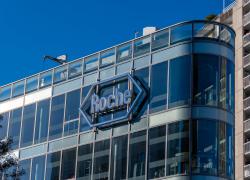
AACR 2024 – Medicenna looks for a cytokine renaissance
After numerous IL-2 failures there are glimmers of hope for the group’s contender, MDNA11.
After numerous IL-2 failures there are glimmers of hope for the group’s contender, MDNA11.

After once being biotech’s big thing, cytokine-based therapies have fallen out of favour. But one player here, Medicenna, reckons there’s life left in this approach – and, yesterday at AACR, the group presented early data on its IL-2 candidate, MDNA11, suggesting that it might be on to something.
Might is the operative word here though, with data very early and in only a handful of patients. On the plus side, in the phase 1/2 Ability-1 trial Medicenna has seen several responses with MDNA11 monotherapy, which is an achievement in itself given the chequered history of IL-2. And these responses came among patients who had previously failed on checkpoint inhibitors, a tough-to-treat population.
However, there are reasons for caution. Medicenna is claiming a 29% overall response rate among 14 patients – but this denominator only includes those deemed eligible for phase 2, which naturally weeds out patients in whom efficacy was poor. The AACR poster details 30 patients overall, and if all of these are taken into account the ORR is a much less impressive 13%.
MDNA11’s prospects might become clearer as more data emerge from the phase 2 monotherapy dose-expansion portion of Ability-1, testing the IL-2 therapy dosed at 90µg/kg in checkpoint inhibitor-resistant melanoma, non-melanoma skin cancer, and microsatellite instability (MSI)-high tumours.
“Beta enhanced”
So why should Medicenna succeed where others have failed? Recombinant human IL-2, Proleukin, has anticancer activity but is notoriously toxic. It has long been thought that the drug’s efficacy has been limited by its stimulation of immunosuppressive T regulatory cells, making it hard to find a therapeutic window.
Many companies have tried to combat this with therapies that don’t bind to the alpha chain of IL-2 – found on the high-affinity trimeric receptor, which is expressed on Tregs. Still, many “not-alpha” approaches have crashed and burned, most notably Nektar’s bempegaldesleukin.
Medicenna believes that binding to another IL-2 subunit, beta, is vital, so has therefore created an engineered IL-2 that’s not only “not-alpha” but also “beta-enhanced”. In MDNA11, the IL-2 is also fused to albumin, to prolong its half-life and promote accumulation in tumours.
The approach seems to have paid off with yesterday's early hints of efficacy. The four responses were seen in patients with melanoma, and MSI-high small bowel and pancreatic cancers. All received MDNA11 dosed at either 60µg/kg or 90µg/kg.
Perhaps just as importantly with an IL-2 therapy is safety data. There were no grade 4 or 5 treatment-related adverse events, no dose-limiting toxicities, and no evidence of vascular leak syndrome – which is a known issue with IL-2.
There were some grade 3 liver enzyme elevations, which were described as asymptomatic and transient.
As well as the monotherapy dose-expansion cohort, the trial will also evaluate MDNA11 plus Keytruda; but data with such combos have often proved hard to interpret. For now, Medicenna will be celebrating a 30% bump in its share price today, but with a market cap of under $100m investors likely still need more convincing that IL-2 is back.
2177













